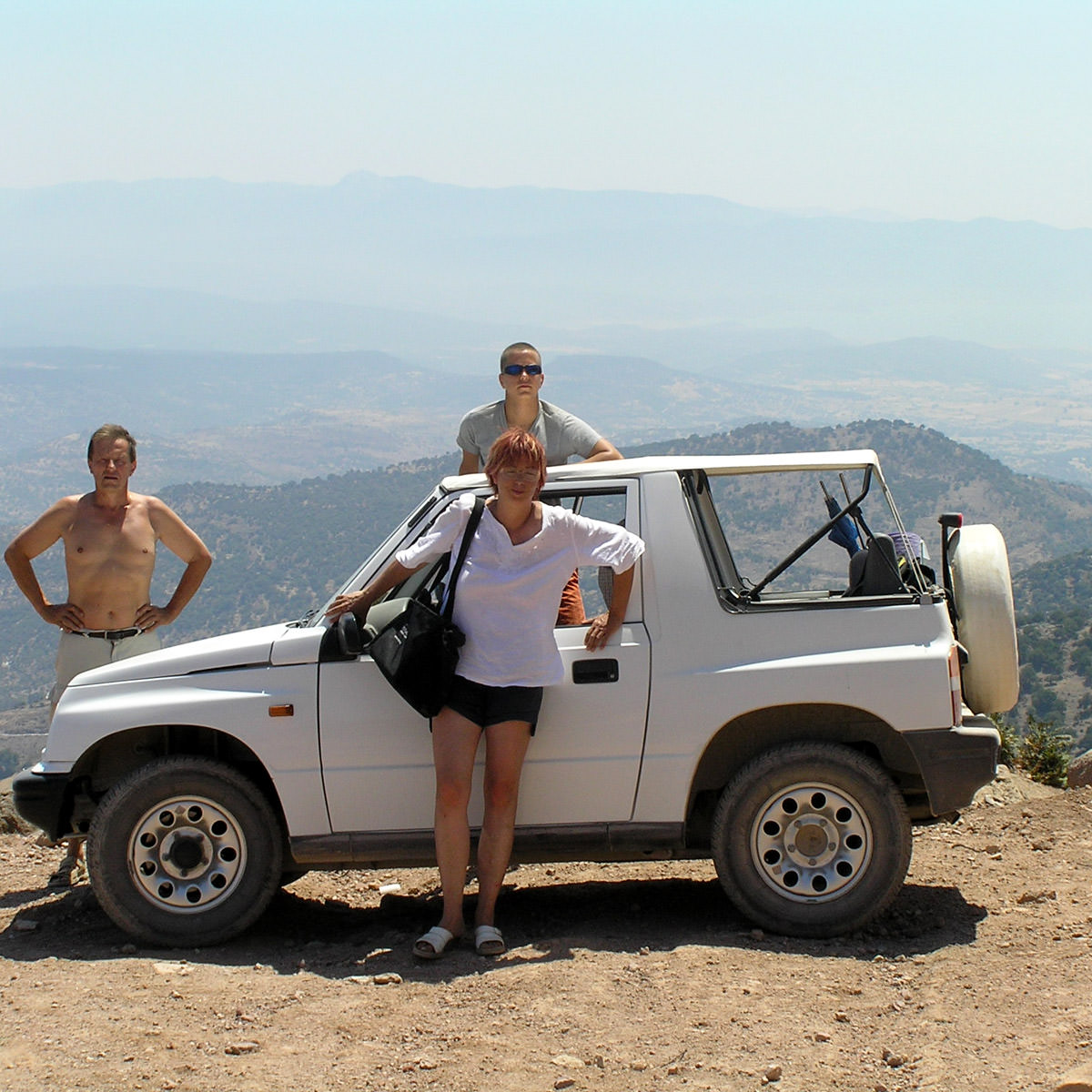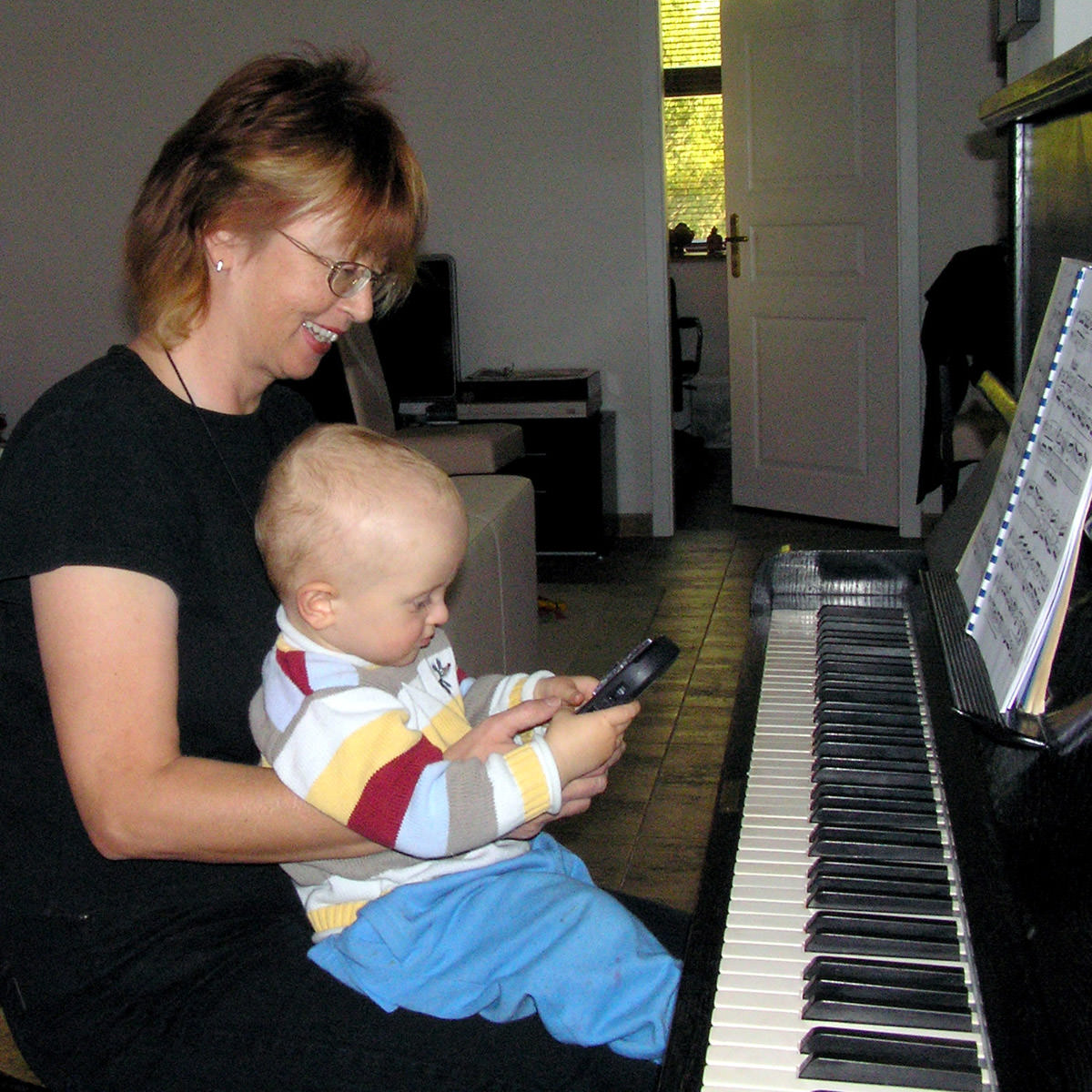There’s a certain stick-to-it-iveness about Alexandra Zahradníková, who leads the Laboratory of Molecular Biophysics in the Institute of Molecular Physiology and Genetics at the Slovak Academy of Sciences in Bratislava, Slovakia. Whether overcoming gender bias, raising a family while building her scientific career, or finding ways to keep doing science in the face of adversity, Zahradníková has beaten the odds time and again.
The daughter of a biology teacher (her mother) and the top editor of Cinema and Theater Journal (her father), Zahradníková grew up in a household that “valued science, art and knowledge very much,” she says. It was her grandparents, though, who taught her perseverance by example. Her grandmother, though blind, performed the family’s daily domestic chores with relish, while her grandfather, though not formally educated, was a jack-of-all-trades and self-motivated inventor. “They made me sure that one can handle anything with sufficient determination,” she says.
This lesson definitely sunk in. By junior high, Zahradníková knew she wanted a career in science. She started by attending the Košická Junior High School, which specialized in math, and ended up with a PhD in inorganic, physical, and analytical chemistry from the Slovak Technical University. After graduating in 1982, the job search began for Zahradníková, now wife and mother of two. “University positions were rarely open for people who were not members of the communist party,” she says. “For positions in industry or in governmental institutions I was either overqualified, or of wrong gender, or with too many kids.” A lucky break came in the form of Jozef Zachar, then director of the Center of Physiological Sciences of the Slovak Academy of Sciences and the boss of Zahradníková’s husband, Ivan Zahradník. Zachar hired Zahradníková to join the team of a new department. “My assignment was to develop a sensor for fast measurement of glucose in blood plasma,” she says. “In one year I worked out a real prototype and, maybe for this success, I was transferred to work on a completely new project, this time the real biophysics.” She and four electrical engineers were assigned to a team headed by Zahradník and charged with establishing Slovakia’s first patch-clamp lab. “It was a great challenge for us, since working behind the Iron Curtain was neither simple nor easy,” she says. Nine months later, with some help from Láďa Vyklický and Yuri Osipchuk in Prague and Kiev respectively, the team had their first single channel recordings, and Zahradníková officially began her biophysics career.
It is the multidisciplinarity that gives biophysics the power to find out how things work. In fact, I loved biophysics before I even knew it existed. For me, it is the science of life.
- Zahradníková
 Zahradníková researches the mechanism of calcium signaling that mediates transduction of electrical excitation into contraction in cardiac myocytes, with a special interest in the function of the calcium-releasing channel known as the ryanodine receptor (RYR2). “I am mostly involved in deciphering the RYR function inside the myocytes, where it is subjected to rapid changes of cytosolic conditions during rhythmic contractions,” she says. “More specifically, I study the regulation of RYR activity by calcium and magnesium ions binding to its activation sites, which seems to be allosterically coupled to channel gating.” This wasn’t an area Zahradníková ever envisioned herself working in, however. When she and her husband arrived at the University of Texas Medical Branch as postdocs in Phil Palade’s lab, the project agenda changed. “As an alternative, I was asked to implement the planar lipid bilayer technique and to study RYRs in vitro,” she says. After a rocky start, Zahradníková found something in the project that grabbed her interest. “I was not happy with that at the beginning, since this huge protein behaved so weirdly that it seemed to defy understanding,” she says, “but when I got the key I really liked it.”
Zahradníková researches the mechanism of calcium signaling that mediates transduction of electrical excitation into contraction in cardiac myocytes, with a special interest in the function of the calcium-releasing channel known as the ryanodine receptor (RYR2). “I am mostly involved in deciphering the RYR function inside the myocytes, where it is subjected to rapid changes of cytosolic conditions during rhythmic contractions,” she says. “More specifically, I study the regulation of RYR activity by calcium and magnesium ions binding to its activation sites, which seems to be allosterically coupled to channel gating.” This wasn’t an area Zahradníková ever envisioned herself working in, however. When she and her husband arrived at the University of Texas Medical Branch as postdocs in Phil Palade’s lab, the project agenda changed. “As an alternative, I was asked to implement the planar lipid bilayer technique and to study RYRs in vitro,” she says. After a rocky start, Zahradníková found something in the project that grabbed her interest. “I was not happy with that at the beginning, since this huge protein behaved so weirdly that it seemed to defy understanding,” she says, “but when I got the key I really liked it.”
It was fortunate that Zahradníková had found this passion for her work. Back in an economically depressed Bratislava in 1991, her passion was tested and her perseverance was called on in full. After considering career changes, Zahradníková and her husband decided to stick to science. Without funding, they turned to their computer, which they had purchased in the States, and got to work. “We developed sophisticated theoretical methods for computer analysis and modeling of channel gating,” she says. Their results were published in Biophysical Journal, and funding began to pour in. An HHMI International Research Scholar Award later, Zahradníková found herself back in Texas, this time in Sandor Gyorke’s lab at the Texas Tech University Health Sciences Center, looking at the responses of RYR2 channels in bilayers to fast, brief calcium concentration changes for the first time. “From the very beginning, Alexandra impressed me with her ability to see hidden patterns in piles of confusing data and bring them to light almost like magic by elegant mathematical analysis,” says Gyorke. “Her research of local calcium signaling during cardiac excitation-contraction coupling is at the forefront of science and spectacular.” Zahradníková’s work with Gyorke earned them additional funding, and Zahradníková returned to the lab she shares with her husband in Bratislava and outfitted it with state-of-the-art patch-clamp, confocal microscopy, and bilayer setups, which she maintains today.
 Not only did Zahradníková produce a solid career practically out of thin air, but she built both a personal and professional relationship with her husband. “She is beautiful, clever, and spontaneous … and loves science as I do,” says Zahradník of his wife. “Sasha is my nearest collaborator. We are very different persons but complementary by way of thinking, skills, and attitudes.” The couple married young, and have since weathered the dynamic lifestyle of two scientists pursuing research careers while raising a family. “Our life was hectic, with little room for rest, but when we found it, it was always within the family and with the closest friends,” he says. In addition to spending time with their two daughters, the couple loves to explore new places with best pals Iwar Klimeš and Zuzana Jezerská, also of the science community.
Not only did Zahradníková produce a solid career practically out of thin air, but she built both a personal and professional relationship with her husband. “She is beautiful, clever, and spontaneous … and loves science as I do,” says Zahradník of his wife. “Sasha is my nearest collaborator. We are very different persons but complementary by way of thinking, skills, and attitudes.” The couple married young, and have since weathered the dynamic lifestyle of two scientists pursuing research careers while raising a family. “Our life was hectic, with little room for rest, but when we found it, it was always within the family and with the closest friends,” he says. In addition to spending time with their two daughters, the couple loves to explore new places with best pals Iwar Klimeš and Zuzana Jezerská, also of the science community.
“Mom is a very principled, honest, strong-willed person and an incorrigible idealist,” says Zahradníková’s grown daughter, Ivana Vlachova. “She is the example that all this is really possible, in spite of the well known difficulties that professional women encounter,” Zahradník adds. Though the path isn’t always easy, for Zahradníková the way is clear. “For happiness, it is important that we pursue things we consider important,” she says. “The important things can be achieved by patient and perseverant work, one day at a time.”